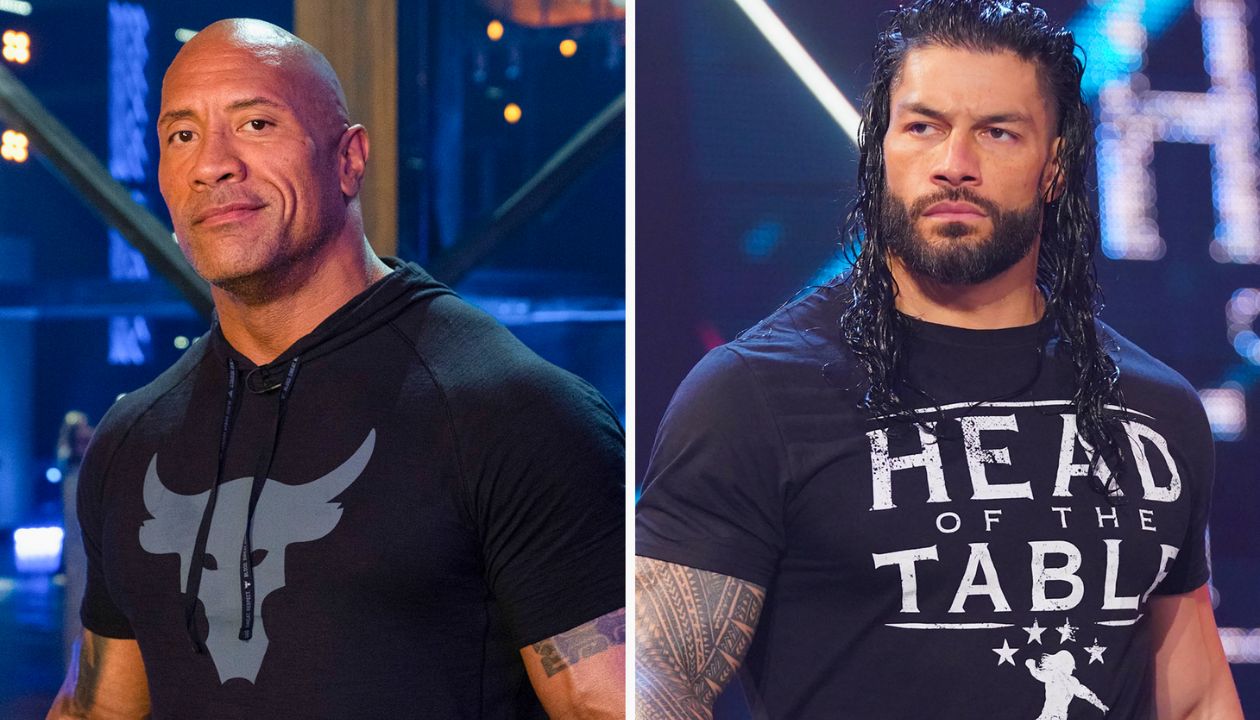In the world of professional wrestling, the superstars involved in rivalries frequently have their careers defined by them. There aren’t many rivalries as complex and fierce as the one that exists between Drew McIntyre and Seth Rollins. Despite their differences, these two titans of the ring have a complicated connection because of their shared contempt for CM Punk. In a recent interview on “The Masked Man Show,” McIntyre discussed his past with Rollins, providing insight into their competitive dynamic and how it affects their performances.
A Relationship Characterized by Professionalism and Tension
Drew McIntyre and Seth Rollins have a tense yet respectful connection as he talks about their interactions. According to McIntyre, “I mean, personally, it can get a little bit tense at times,” in the interview. The truth of many wrestling rivalries, where personal and professional boundaries are frequently blurred, is reflected in this open acknowledgment. Even if there are times when they disagree, McIntyre says their rivalry is professional, to improve both their performances and the caliber of WWE programming as a whole.
Rollins and McIntyre have wrestled together multiple times, pushing one another to greater heights each time. “Our rivalry is based, you know, in a professional sense, as I said on TV to his face — and I mean it,” McIntyre clarified. In their high-profile fights, spectators have observed the professional competition between the wrestlers turning occasionally into a battlefield where they try to outdo one another.
Iron Sharpening Iron: The Advantage in Competition
Within the WWE, competition is more than just a component of the sport; it serves as the impetus for the captivating performances that draw in crowds. McIntyre and Rollins’ rivalry has served as a motivator for advancement. “No matter what the circumstances are, we get together and push each other to have the best match and interview possible,” McIntyre remarked. This “iron sharpening iron” approach emphasizes how their interactions are about pushing each other to succeed in all facets of their lives, not just in the ring.
Their performances clearly show how competitive their relationship is. Every McIntyre and Rollins match is evidence of their dedication to providing the best possible wrestling entertainment. Because of their competitive nature and in-ring chemistry, some of the most memorable matches in recent WWE history have taken place. Even though it can occasionally result in conflict, this professional tension ultimately helps them improve their craft and amuse fans.
Hitting Buttons: The Art of Psychological Combat
Although their competition is professional, McIntyre acknowledges that their encounters also have a psychological component. McIntyre admitted, “I like to agitate my opponents and I push buttons a little too hard.” This realization highlights a tactical aspect of McIntyre’s strategy, in which he uses psychological tricks to give himself an advantage over rivals. For McIntyre, getting Rollins to respond is not simply a way to satisfy himself, but also a way to improve their performance in bouts.
There is some risk associated with this button-pushing tactic. Although McIntyre admits that his strategy of taunting his opponents might increase stress, he also sees it as an essential component of his game plan. McIntyre noted that he performs better when he can access his frustrations and emotions, saying, “I know I operate best when I’m angry.” Their competition gains more drama from this psychological game, but it also makes their matches more intense.
The Common Quality: Encouraging One Another’s Best
The fact that McIntyre and Rollins both thrive under duress is one of the interesting facets of their rivalry. According to McIntyre, “The Architect” likewise functions best when he is furious, which is a resemblance that deepens their rivalry. Because they both use their fury to improve their performance, they have a special synergy in which the passion of each wrestler inspires the drive of the other.
This comparison can be interpreted as evidence of their professionalism and dedication to the game in many ways. Both McIntyre and Rollins are aware of the mental and physical rigors involved in wrestling, and their aptitude and experience are demonstrated by their capacity to project their feelings onto the mat. Despite their rivalry, their mutual respect highlights the professionalism of their wrestling style.
CM Punk: The Resentment-Catalyst
Their mutual animosity against CM Punk adds another level to the rivalry between McIntyre and Rollins. Their confrontations became even more intense when their contempt for Punk was made clear throughout the SummerSlam events. Although the exact details of this animosity are still unclear, Punk’s influence or deeds have certainly exacerbated the conflict between McIntyre and Rollins.
A contentious and outspoken presence in the wrestling community, CM Punk has divided opinion. His words and deeds have frequently provoked reactions from other wrestlers, and the tension that has surrounded him has surely contributed to the rivalry between Rollins and McIntyre. The intensity and intricacy of their encounters are enhanced by this extra layer of animosity toward a shared character.
A Rivalry Characterized by Diligence and Fervor
Wrestling rivalries are complex; Drew McIntyre and Seth Rollins are two prime examples. The complexity of their exchanges both inside and outside of the ring is highlighted by their relationship, which is characterized by tension and respect. Their mutual contempt for CM Punk, psychological strategies, and competitive spirit enhance to their rivalry, making it one of the most interesting in recent WWE history.
WWE programming continues to revolve around McIntyre and Rollins’ animosity as they push each other to new heights. Their relationships will continue to enthrall people and inspire gripping tales because of their professional respect and emotional strain. In the world of professional wrestling, where rivalries can determine careers, McIntyre and Rollins’ relationship sticks out as an example of the fervor and commitment that drive the sport.




